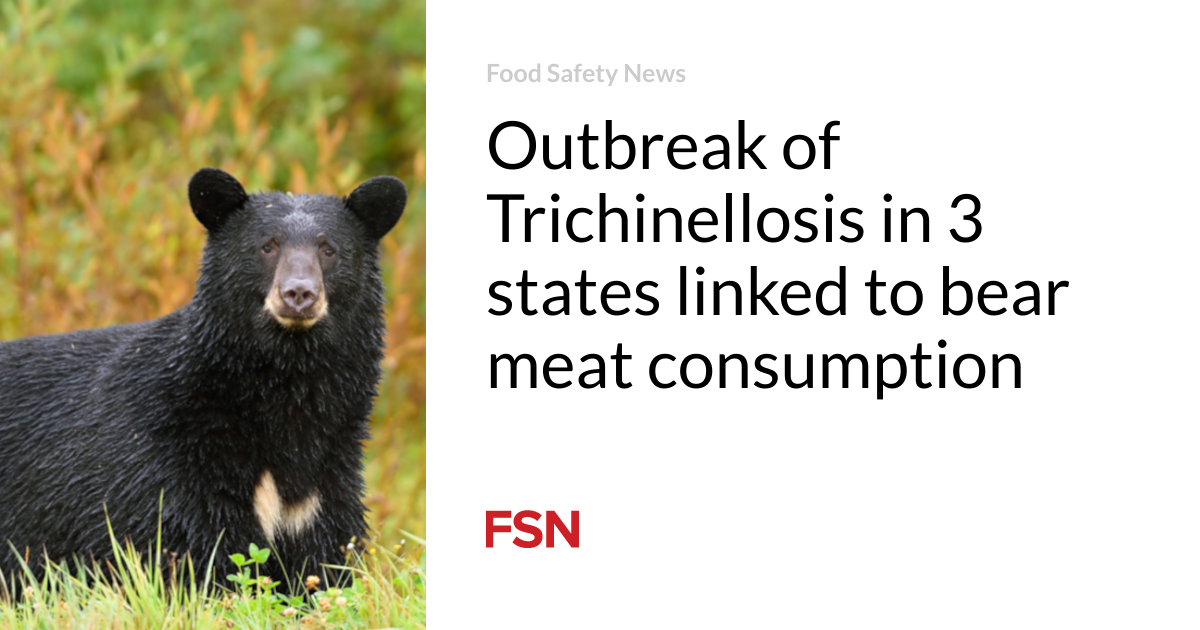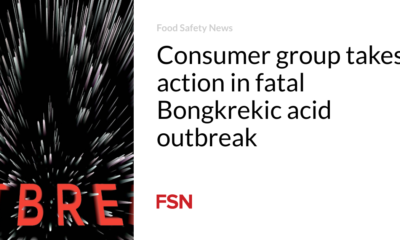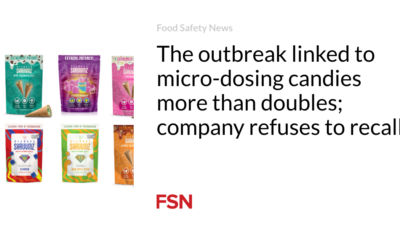Food
Trichinellosis outbreak in three states linked to bear meat consumption

In an unusual outbreak of human trichinellosis in July 2022, six people from three states – Arizona, Minnesota and South Dakota – were diagnosed with the parasitic disease after consuming bear meat at a family gathering in South Dakota. The Centers for Disease Control and Prevention (CDC) recently confirmed the outbreak and emphasized the importance of proper cooking and food safety measures to prevent such infections.
The outbreak stemmed from a meal shared by nine people, which included grilled black bear meat harvested from northern Saskatchewan, Canada. The meat had been frozen for 45 days, as advised by the hunting outfit to kill potential parasites. Despite this precaution, six people became ill, including two who ate only vegetables cooked alongside the meat.
Research and findings
The Minnesota Department of Health was alerted to the situation in July 2022 when a 29-year-old man was hospitalized with symptoms consistent with trichinellosis: fever, severe myalgia, periorbital edema, and eosinophilia. The patient had a history of consuming bear meat, which led to a broader investigation.
Public health authorities from Arizona, Minnesota and South Dakota conducted interviews and collected blood samples from the meal attendees. Testing confirmed six cases of trichinellosis: two confirmed by positive Trichinella immunoglobulin G (IgG) antibody tests and four likely based on symptoms and exposure.
Laboratory analysis of the remaining bear meat revealed motile Trichinella larvae, particularly the frost-resistant species Trichinella nativa, even after more than 15 weeks of freezing. This finding highlights the resilience of certain Trichinella species to freezing and the need for thorough cooking to ensure safety.
Public health implications
Trichinellosis, caused by Trichinella spp. nematode, is a zoonotic disease usually contracted through the consumption of undercooked meat from infected animals. In the United States, trichinellosis is rare, with most cases linked to wild game rather than commercially raised pork, thanks to improved agricultural practices.
This outbreak underlines the critical need for good food handling and cooking practices, especially when it comes to game. The CDC recommends cooking all meat, including game, to an internal temperature of at least 165 degrees Fahrenheit (74 degrees Celsius) to kill Trichinella parasites. Visual inspection of meat is not a reliable method of assessing doneness, as evidenced by this incident where the dark color of the bear meat led to underdoneness.
The full CDC report may be found here.
About Trichinellosis
Trichinellosis can cause a range of symptoms, starting with gastrointestinal problems such as nausea, diarrhea and abdominal pain, and progressing to systemic symptoms such as headache, fever, muscle pain and swelling of the face and eyes. Severe cases can lead to complications that affect coordination, breathing and even heart function.
The risk of trichinellosis is low in the US, with about 15 cases occurring annually. Most infections occur from consuming undercooked or raw meat from wild game, including bear, wild boar and walrus.
Prevention and safety tips
To prevent trichinellosis, the CDC recommends:
- Cook meat thoroughly: Use a food thermometer to ensure an internal temperature of 165 degrees F (74 degrees C).
- Avoiding raw or undercooked meat: Do not taste meat until it is fully cooked.
- Practice good hygiene: Wash your hands with soap and warm water before and after handling raw meat.
- Preventing cross-contamination: Keep raw meat separate from other foods and clean cookware and surfaces thoroughly.
Freezing is generally ineffective against Trichinella species found in wild game. Traditional methods such as drying, drying, smoking or microwaving also do not consistently kill the parasite.
For more information about trichinellosis, visit the CDC website.
(To sign up for a free subscription to Food Safety News, Click here.)













